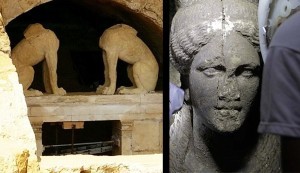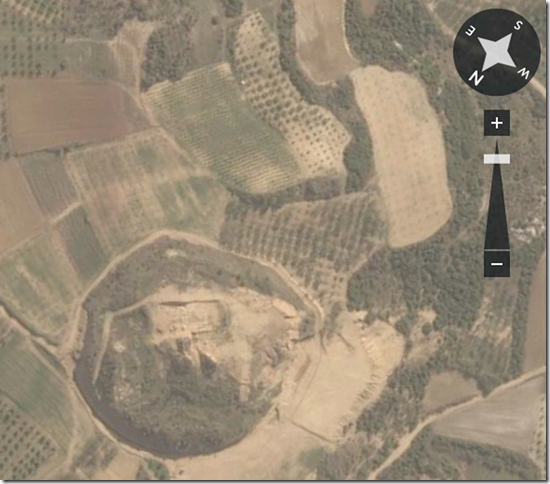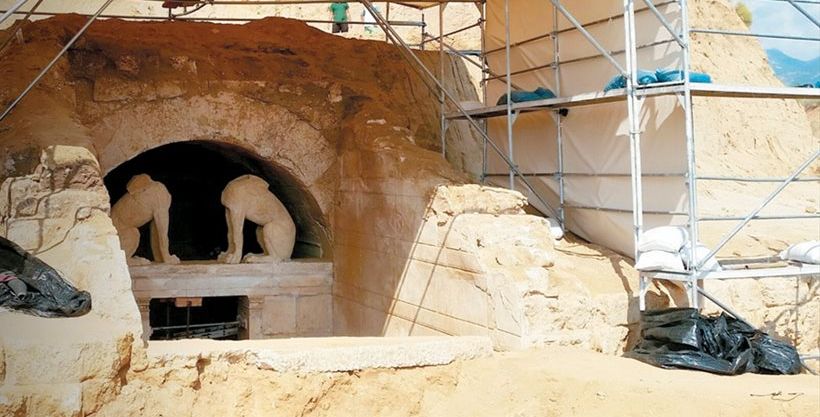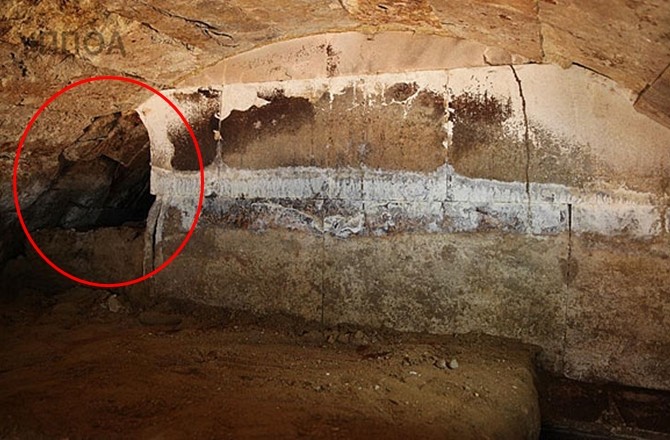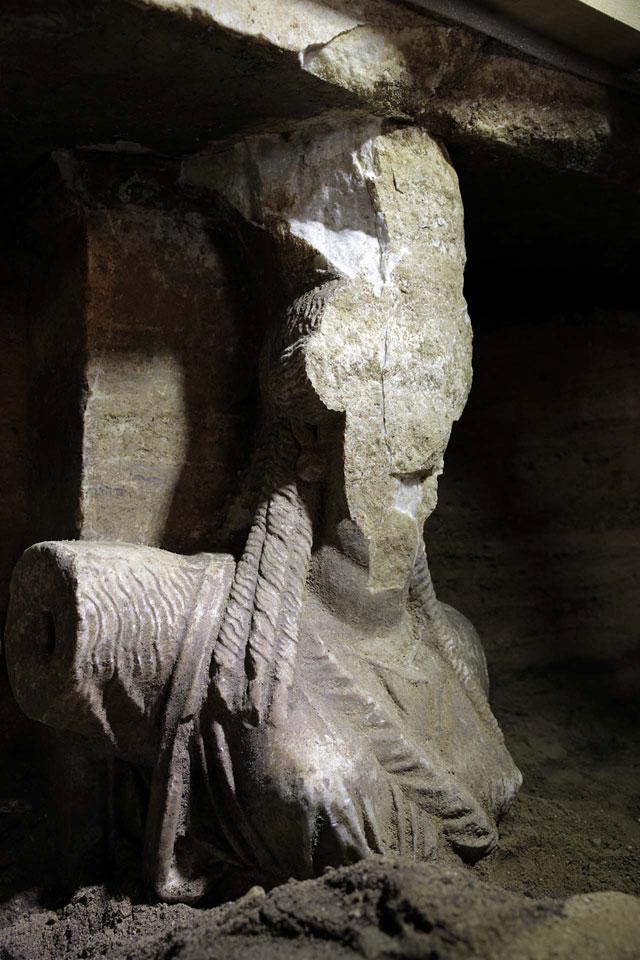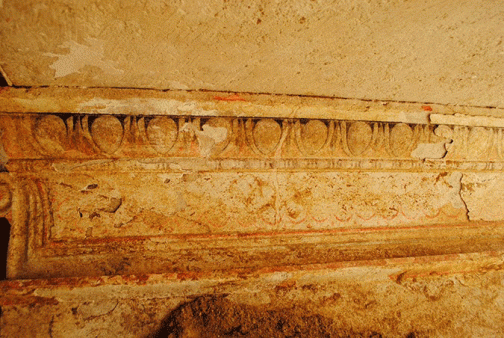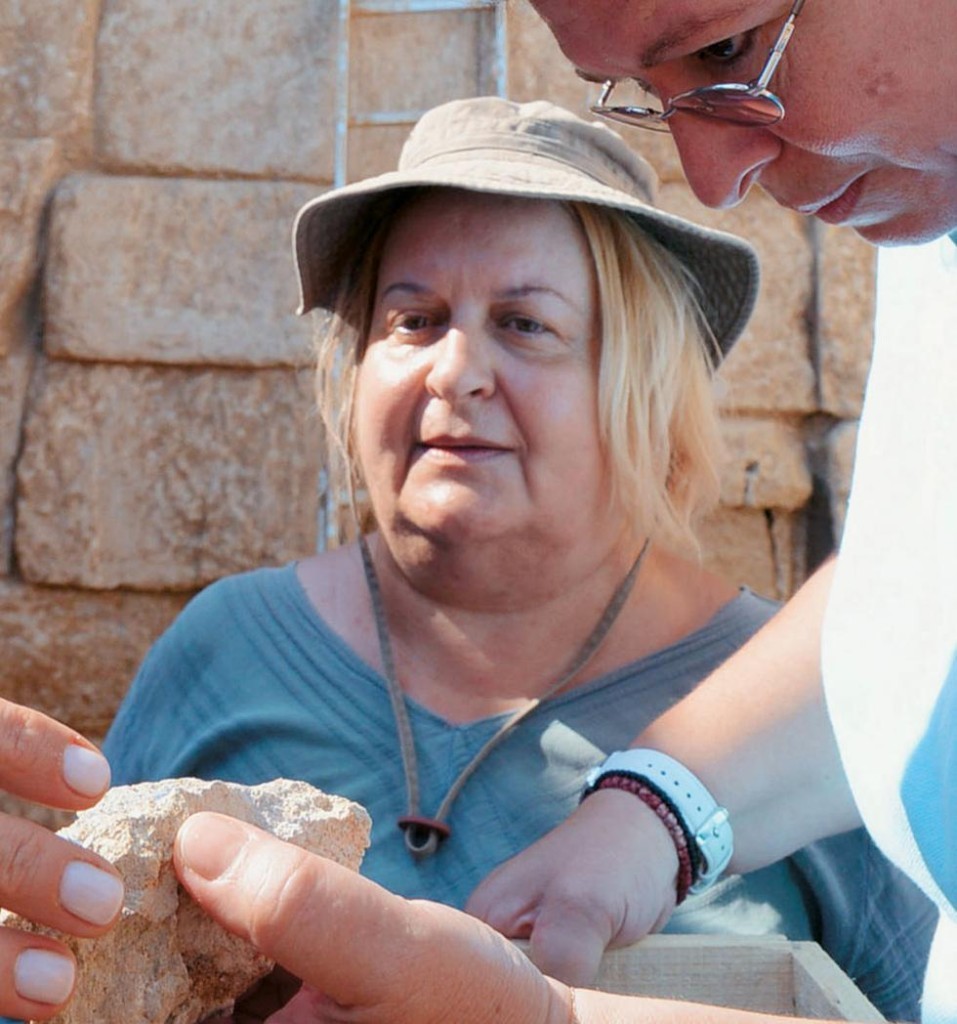The secrets of the ancient tomb at Amphipolis are many and raise a number of questions.
Why Amphipolis?
In ancient times, the area was important due to its strategic location. Gold and silver of the Pangaion hills made the area particularly attractive and the dense forests were important also for naval construction. It was here that Alexander the Great defeated the remains of Xerxes’ army in 479 BC. In the reign of the great warrior king, Amphipolis was an important naval base and the birthplace of three of the most famous Macedonian admirals – Nearchus, Androsthenes and Laomedon. The ancient site was one of the main stops on the Macedonian royal road.
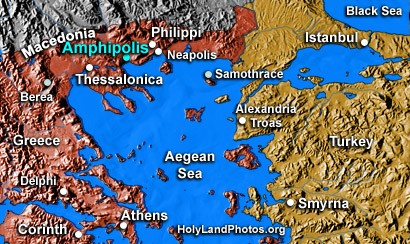
Amphipolis is built on a raised plateau overlooking the east bank of the river Strymon where it emerged from Lake Cercinitis, about 3 m from the Aegean Sea.
Why is the tomb so large?
The Tomb of Amphipolis lies on the hill of Kasta. The surrounding wall is 500 meters long and is almost a perfect circle with a diameter of 158.4 meters – a trademark number used by Alexander the Great’s personal friend, ancient architect Dinocrates who had also constructed the walls of Alexandria at 15,840 meters in length. The surrounding wall has a height of 3 meters and constructed of Thassian marble. The top of the surrounding wall is where the Lion of Amphipolis stood at 5.2 meters in height. The tomb is sealed.
The creator of the tomb may possibly have been motivated by envy when he created a tomb that is ten times larger than that of the tomb of Alexander’s father, Phillip 2 of Macedon. Another explanation may be that the tomb could belong to many men and not just one person. Tombs in antiquity weren’t large-scale, however the ancient tomb at Amphipolis may have been influenced by the monumental Egyptian tombs – an idea acquired following Alexander the Great’s Eastern conquests.
Is Amphipolis the “next Vergina”?
Quite possibly, as long as the tomb hasn’t been plundered. It all depends on whether human remains will be found within the tomb showing that members of the royal family are buried here. In that case, history books will need to be rewritten. Archaeologists believe that even if looters have extracted items of value from within the tomb, it is still of inestimable cultural value.
Has the tomb been plundered?
There is a great deal of speculation regarding this, even though lead archaeologist at the site, Katerina Peristeri, claims that the tomb is extremely well-protected and that the sealing and other safety precautions may have prevented looting. Nonetheless, the fact that the Lion of Amphipolis that had stood at the top of the mound had been removed, the headless sphinx guards at the entrance and damage to the Caryatids are proof that the site isn’t in tact.
Why had the geological studies at the hill of Kasta remained hidden?
The C.P.R. work (CLICK HERE) and seismic tomography (CLICK HERE) had been conducted at the region. Archaeologists believe that the findings of Amphipolis would have come to light much sooner had the second study, not been interrupted in 1999, due to lack of funds. The tomography shows that the findings so far are just a small portion of what’s in store. Archaeologist Haido Koukouli-Chrysanthaki who had worked with the team of geologists says that one reason why a great deal of importance wasn’t placed on the seismic tomography was because it’s accuracy was unverified and the Antiquities Department of Kavala had a number of other priorities at the time, thus putting off the expensive excavations at the hill of Kasta.
The C.P.R. scanning of the region had been conducted by Konstandinos Papatheodorou, lecturer of the Department of Geoinformatics and Surveying of Serres Technical College (TEI), in collaboration with lead archaeologist Katerina Peristeri. He says that he had left the study in her hands.
Why is one of the Caryatids damaged?
The two intricate caryatids uncovered late on Saturday surprised archaeologists as these statues have links to Athens rather than Macedonia. The face of the left Caryatid, on the Western side is in tact, however the one of the right does not. Pieces of the fingers and parts of the hand that were raised to guard the entrance have already been found on the soil below indicating that the sculptures might have been damaged through natural wear. General Secretary of the Ministry of Culture and Sports, Lina Mendoni, believes that a likely reason for the damage is the natural wear through time. Quite possibly, the eastern caryatid was damaged by the pressure of a vertical crack in the tomb and the material used didn’t hold up. She considers it unlikely that the face was vandalized by early Roman looters. However, another scenario could be that ancient Roman grave robbers may have cut off the face and back-filled the tomb.
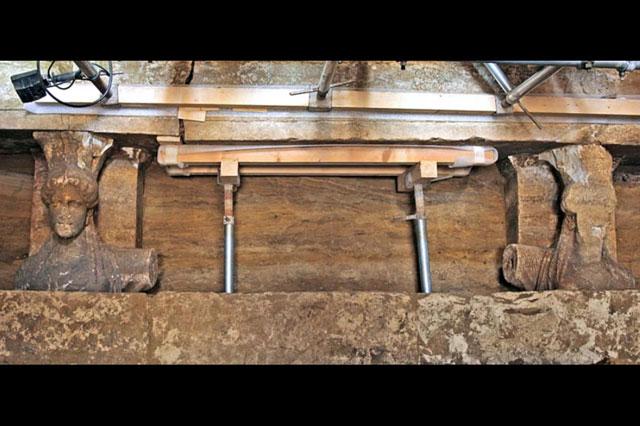
Under the waist of the two Caryatids, a full-width of sealing wall has been revealed of 4.5 meters in length using the same technique as the sealing wall in front of the sphinxes and indicates an intent to keep robbers away
What is the link between the sphinx guards, the caryatids and the lion of Amphipolis?
The caryatids are associated with Athens, however there are Caryatids also found at the throne of Euridyce at Vergina. Unfortunately, however, the specific statue was stolen from Vergina under mysterious circumstances in 2001. Noteworthy also is the fact that caryatids were also used by the Romans, almost exclusively in a funerary context, and many have been found to decorate a number of Roman sarcophagi.
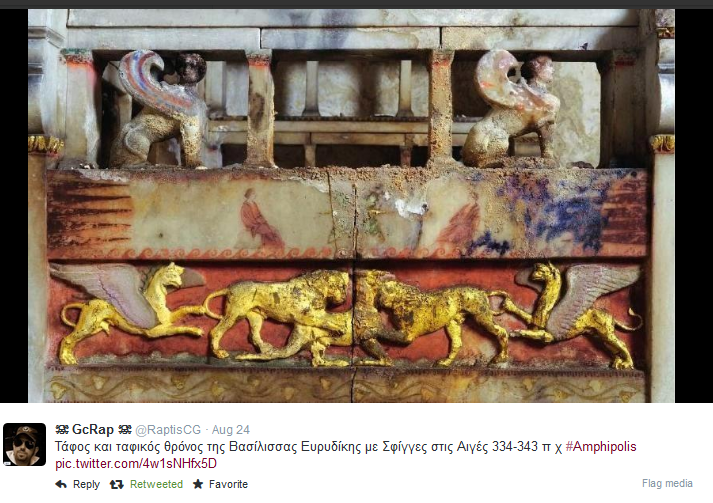
A photo of the throne from the tomb of Eurydice at Vergina were stolen along with the little Caryatid figures (left arm raised; 17 cm, white marble) in the late summer of 2001
The Lion of Amphipolis appears to have been created at the same workshop as the Sphinx guards and appears to be a symbol for a very powerful person at the time. It should be noted that the lion symbol has close associations with Alexander the Great who is often depicted with the characteristics of a lion.
Where are the heads of the Sphinx guards?
It is a mystery. They may have been damaged during an earthquake, destroyed by early Christians on an anti-pagan rampage or found embellishing someone’s private antiquity collection.

The two sphinxes reach a height of 1.45 meters – 2 meters if they had their heads. According to the myth, sphinxes were a mix of lion, bird and human
What are the links between the tomb and Egypt?
The sealing wall was created with diaphragmatic walls and filled with loose sand up to the height of the domb, a practice found in Egyptian tombs so far. The chambers of the tomb were filled with sand after burial to protect it from grave robbers. Furthermore, the sphinx guards keeping vigil at the entrance are also a link with Egypt, though archaeologists warn that this fact alone doesn’t indicate anything. Egyptians built monumental burial tombs, much larger than those created in Greece, and the size of the tomb may have been influenced by Egyptian culture.
Is a male or female buried at the tomb?
The lion is a manly symbol, however the ionic style was characteristically used for females even though excavations at Vergina in 1985 found a Macedonian tomb using the ionic rhythm but belonging to a prominent member of the military.
Why are archaeologists tight-lipped?
Deontology doesn’t allow for assumptions and speculations before studies are adequately conducted. The Ministry of Culture and Sports is very careful in its announcements as a lot of the data hasn’t been accurately verified, such as the Lion of Amphipolis and its link to the tomb or the date of the tomb believed to be at the end of the 4th-century B.C.
When will the contents of the tomb be revealed?
Culture Minister Kostas Tasoulas said that the monument itself “would talk” but so far excavations have been a “test of patience” as the world waits with baited breath to finally find out the identity of the tomb. Unofficially, it is believed that the internal support of the ceiling and diaphragmatic walls will allow archaeologists to enter the tomb and find its secrets within several weeks.
The people doing the research
Ask me anything
Explore related questions
